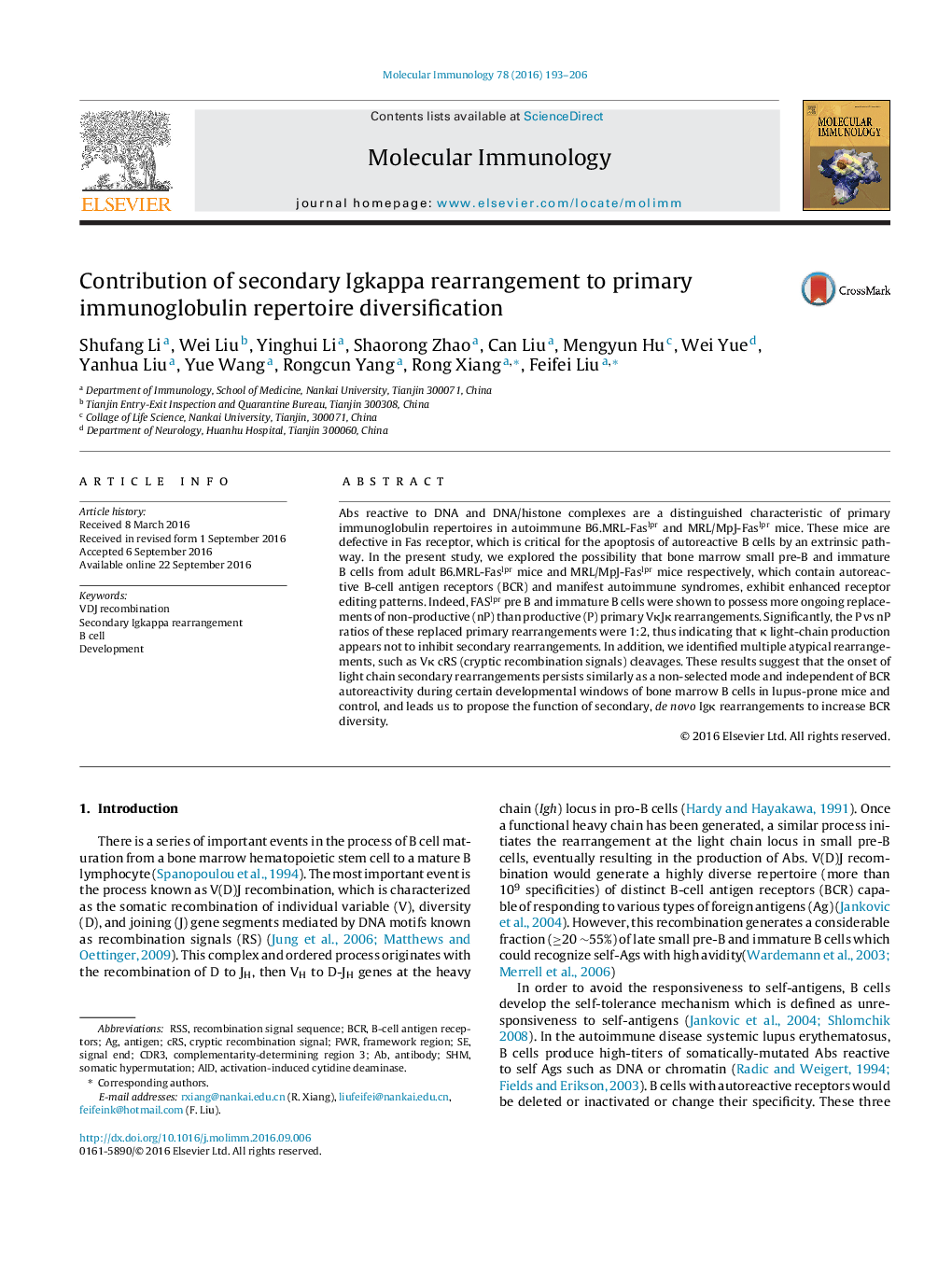| Article ID | Journal | Published Year | Pages | File Type |
|---|---|---|---|---|
| 8648654 | Molecular Immunology | 2016 | 14 Pages |
Abstract
Abs reactive to DNA and DNA/histone complexes are a distinguished characteristic of primary immunoglobulin repertoires in autoimmune B6.MRL-Faslpr and MRL/MpJ-Faslpr mice. These mice are defective in Fas receptor, which is critical for the apoptosis of autoreactive B cells by an extrinsic pathway. In the present study, we explored the possibility that bone marrow small pre-B and immature B cells from adult B6.MRL-Faslpr mice and MRL/MpJ-Faslpr mice respectively, which contain autoreactive B-cell antigen receptors (BCR) and manifest autoimmune syndromes, exhibit enhanced receptor editing patterns. Indeed, FASlpr pre B and immature B cells were shown to possess more ongoing replacements of non-productive (nP) than productive (P) primary VκJκ rearrangements. Significantly, the P vs nP ratios of these replaced primary rearrangements were 1:2, thus indicating that κ light-chain production appears not to inhibit secondary rearrangements. In addition, we identified multiple atypical rearrangements, such as Vκ cRS (cryptic recombination signals) cleavages. These results suggest that the onset of light chain secondary rearrangements persists similarly as a non-selected mode and independent of BCR autoreactivity during certain developmental windows of bone marrow B cells in lupus-prone mice and control, and leads us to propose the function of secondary, de novo Igκ rearrangements to increase BCR diversity.
Keywords
Related Topics
Life Sciences
Biochemistry, Genetics and Molecular Biology
Molecular Biology
Authors
Shufang Li, Wei Liu, Yinghui Li, Shaorong Zhao, Can Liu, Mengyun Hu, Wei Yue, Yanhua Liu, Yue Wang, Rongcun Yang, Rong Xiang, Feifei Liu,
